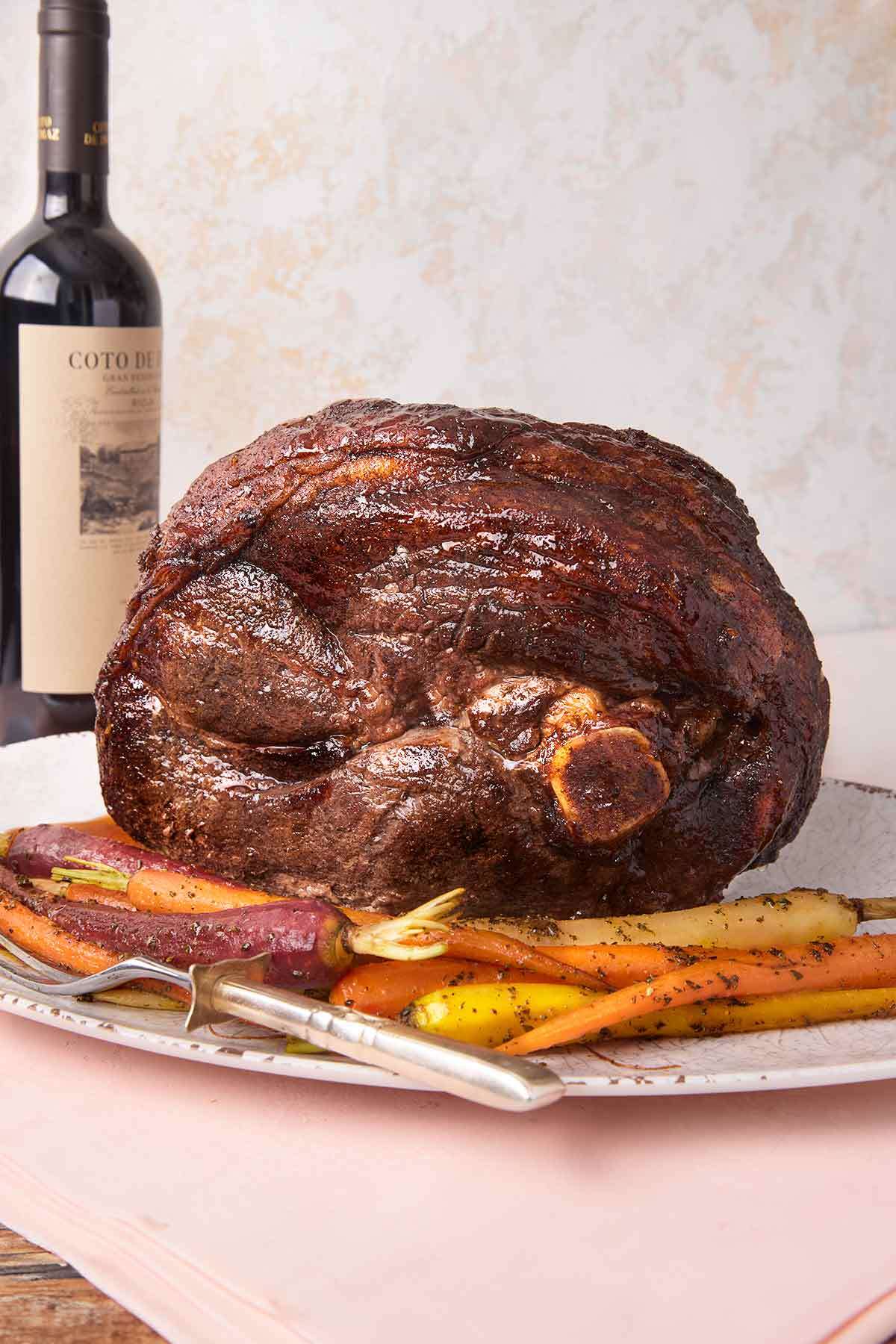
Jump To
- Why You’ll Love This
- What’s the Difference Between Fresh and Cured Ham?
- Notes on Ingredients
- How to Cook a Fresh Ham
- Your Fresh Ham Questions, Answered
- Pro Tips & Troubleshooting
- What to Serve With This Recipe
- Storage and Reheating
- More Superb Ham Recipes
- Write a Review
- Roasted Fresh Ham with Maple-Spice Glaze Recipe
- Recipe Testers’ Reviews
This recipe for a simple yet striking fresh ham comes from (dare I say it?) the hammy duo of Bruce Weinstein and Mark Scarbrough. The hilarious and very talented life and cooking partners. Having had the pleasure of dining at their home, The One and I can say that the food, laughter, and wine flowed freely.
Speaking of wine, this recipe does require several hours of slow cooking. Bruce and Mark suggest you, “Open another bottle of pinot noir and relax.”
Chow,


Why You’ll Love This
My testers were delighted that this fresh ham roast recipe was “excellent and easy to follow and looked beautiful.” Tester Linda P. loved that the spices and maple syrup were perfectly balanced and called it a “great main course for a holiday meal or any special occasion.”
Featured Review
I followed this recipe, and the ham came out great! I even separated the fat from the delicious juices for dipping and that came out wonderful as well! Great recipe with a beautiful ham to share with family! Thank you!
Bree
What’s the Difference Between Fresh and Cured Ham?
Basically, fresh ham is like a raw pork roast from the pig’s leg – you have to cook it all the way through. When you slice it, it looks and tastes like pork shoulder or loin.
Cured ham (think spiral ham) is salty, sometimes smoky, pink, and already preserved so it lasts longer. Some cured hams are ready to eat (think deli slices), while others you still need to warm up or cook a bit more.
Just remember, always double-check that label so you know how to cook the ham you bought.
Notes on Ingredients
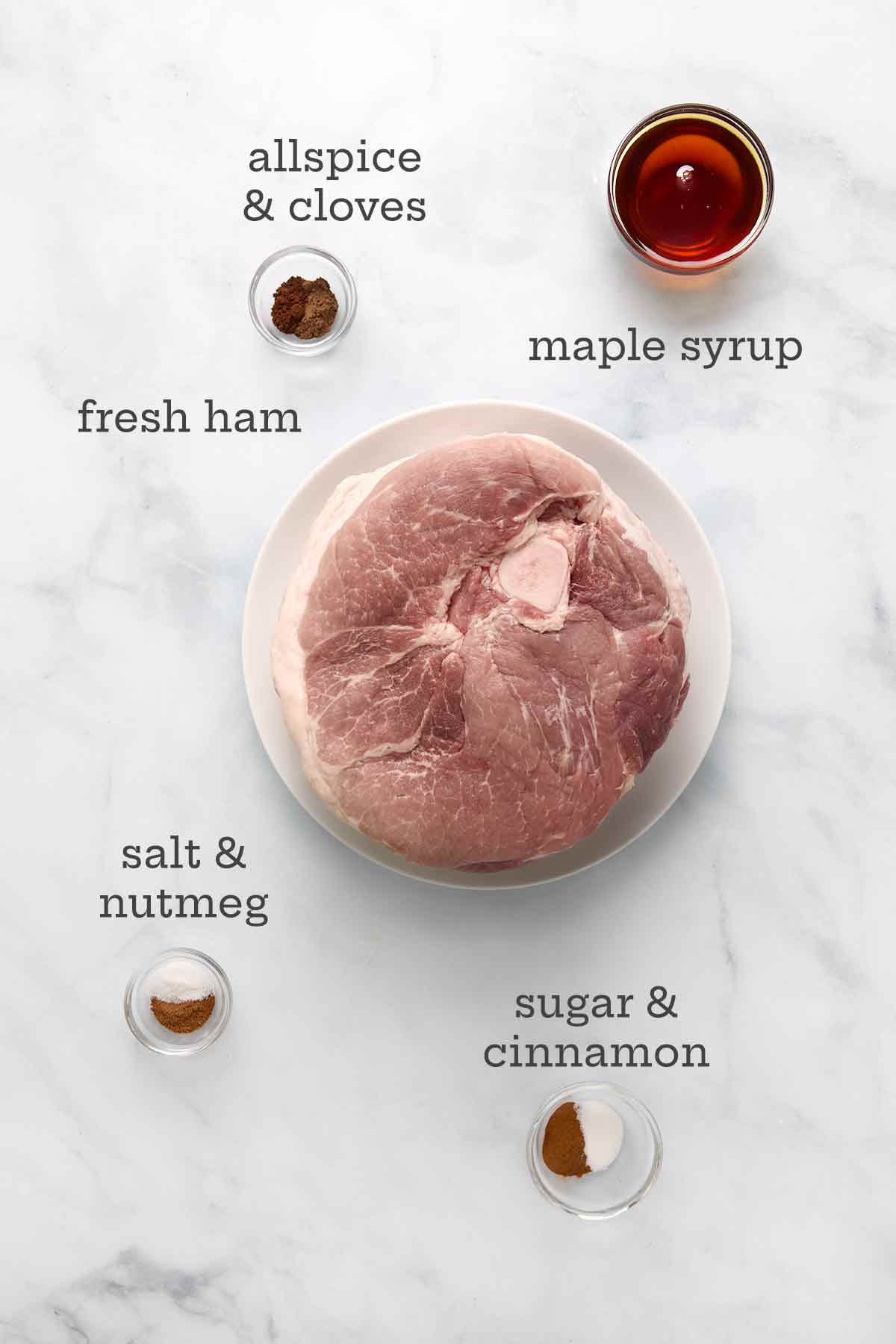
- Fresh ham–This recipe calls for fresh, uncured ham, which is not the same as the pre-cooked smoked hams you’ll find at your local grocery store meat counter. While some supermarkets may carry these around the holidays, you may need to order one from a butcher.
- Spices–The combination of cinnamon, allspice, cloves, and nutmeg adds a subtle flavor to the ham. If you want to kick it up, add some ginger, star anise, or brown sugar, For a bit of heat, cayenne pepper is your answer.
- Maple syrup–You can use any type of real maple syrup here, but not that fake stuff you put on pancakes! It will come labeled as one of four grades–golden, amber, dark, or very dark. The darker the color, the stronger the maple flavor.
How to Cook a Fresh Ham
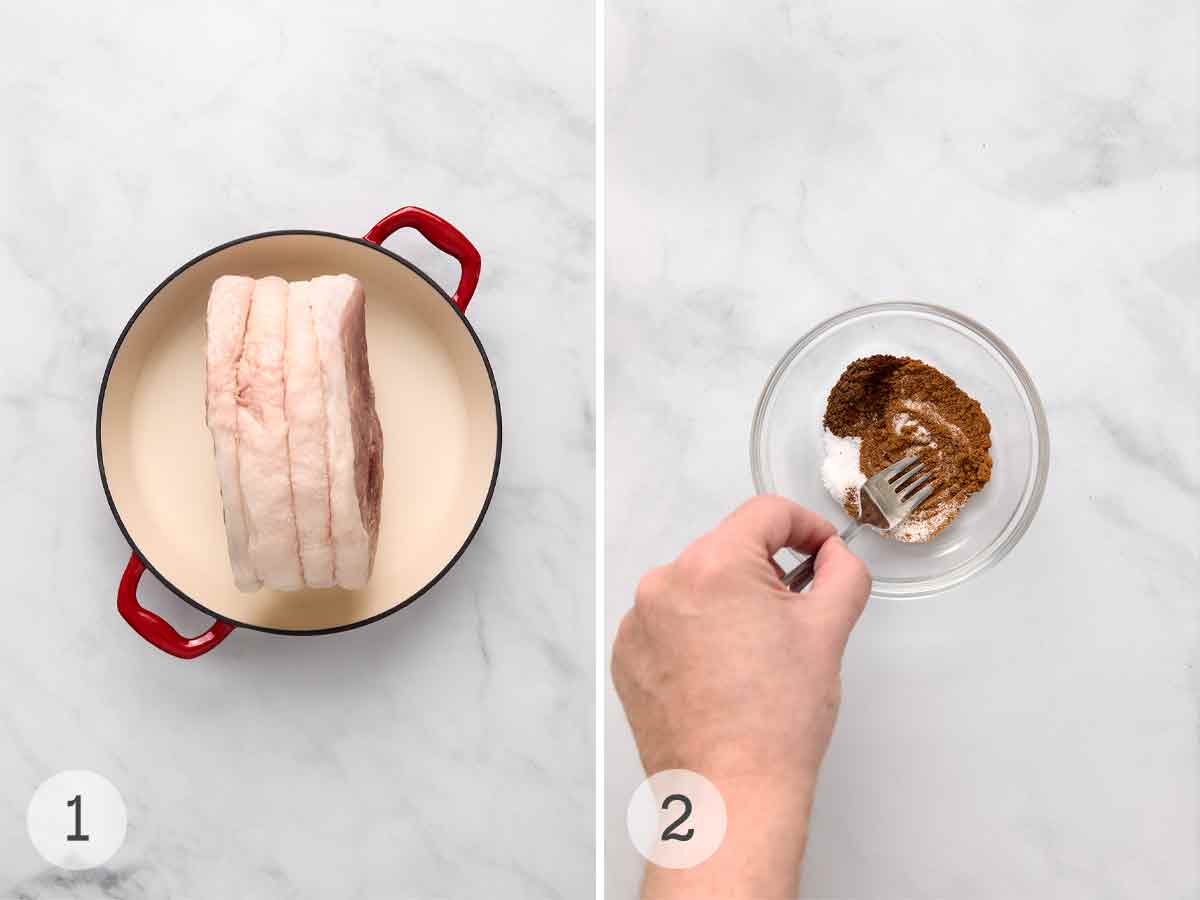
- Preheat the oven to 325°F. Place the fresh ham in a large roasting pan or baking dish.
- Combine the sugar, spices, and salt in a small bowl.
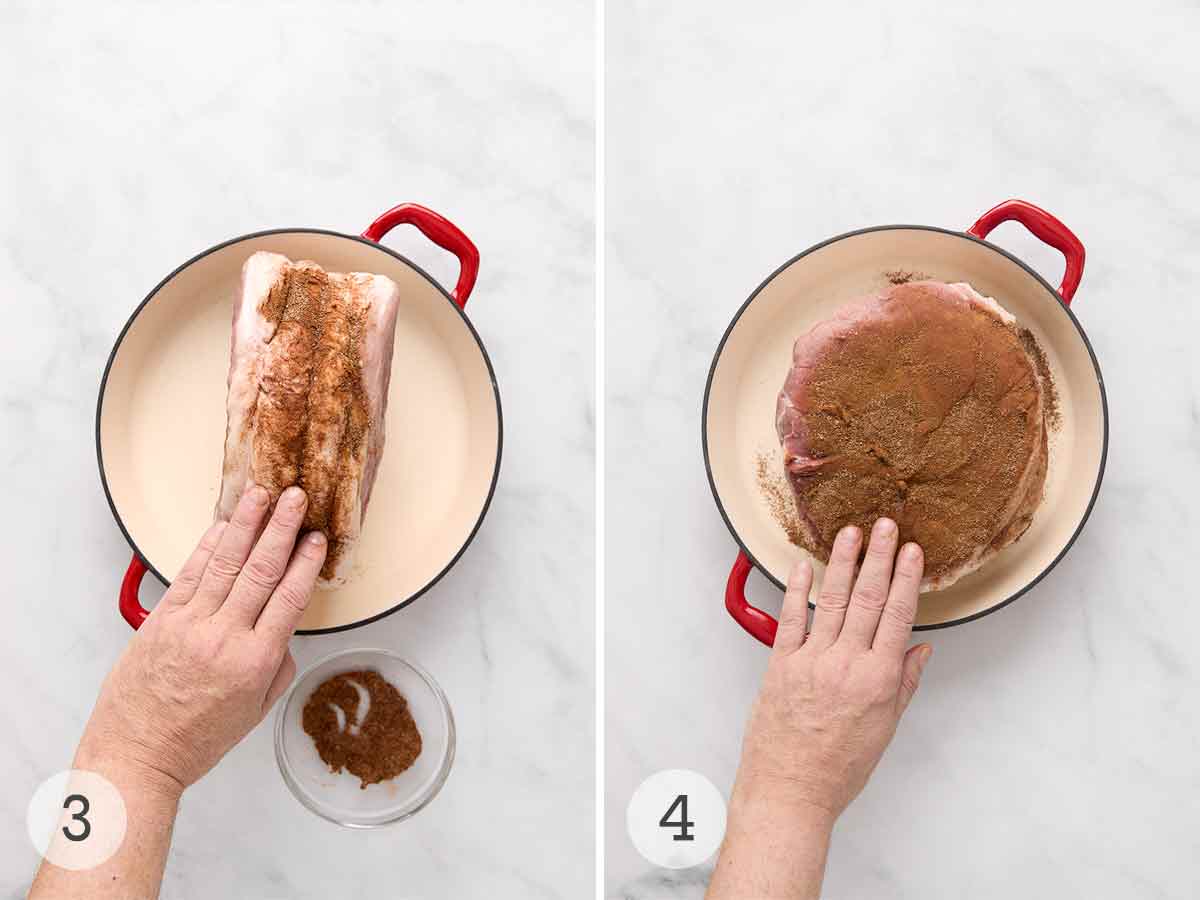
- Rub the spice mixture around the edges of the ham to coat the fat.
- Lay it flat and finish rubbing the spice blend all over the ham. Cover and bake for 3 1/2 hours.
- Uncover and baste with half of the maple syrup. Continue to cook, uncovered, basting every 15 minutes with the remaining syrup and pan drippings, until the internal temperature reaches 170°F.
- Let it rest for 15 minutes before carving.
Want to Save This?
Your Fresh Ham Questions, Answered
When cooking a bone-in ham, purchase one pound for every 2 to 3 people you’ll be serving. If you’re banking on leftovers for grilled ham and cheese sandwiches, ham, cheese, and potato casserole, or ham and potatoes sarladaise, purchase a little extra.
Because this particular roast ham recipe is cooked at a slightly lower temperature, plan on cooking it for 25 to 30 minutes per pound.
To safely enjoy a fresh, uncured ham, it should be cooked to a minimum internal temperature of 160°F (71°C). In this recipe, for the best flavor and most tender meat, we recommend cooking it until an instant-read thermometer registers 170°F (77°C).
Pro Tips & Troubleshooting
- If your fresh ham comes with skin attached, you’ll need to remove it with a sharp knife before roasting. But to avoid THAT frustration, ask your butcher to do it.
- When the ham is done, there will be marvelously sweet-spicy pan elixir. Don’t toss it. De-fat it, if you wish, and serve it with the ham.
- This recipe is suitable for gluten-free and dairy-free diets.
What to Serve With This Recipe
This centerpiece-worthy holiday main is deserving of some special side dishes. I recommend offering rich and creamy Dauphinoise potatoes or roasted potatoes with dill, and a couple of vegetables, such as braised carrots and baked asparagus.
Storage and Reheating
Leftover ham can be stored in a sealed container in the refrigerator for up to 4 days. Reheat it in a tightly covered baking dish in a 300°F oven until warmed. You can freeze the cooked ham in a sealed container or resealable bag for up to 2 months.
Looking for some leftovers inspiration? Try one of these great leftover ham recipes.
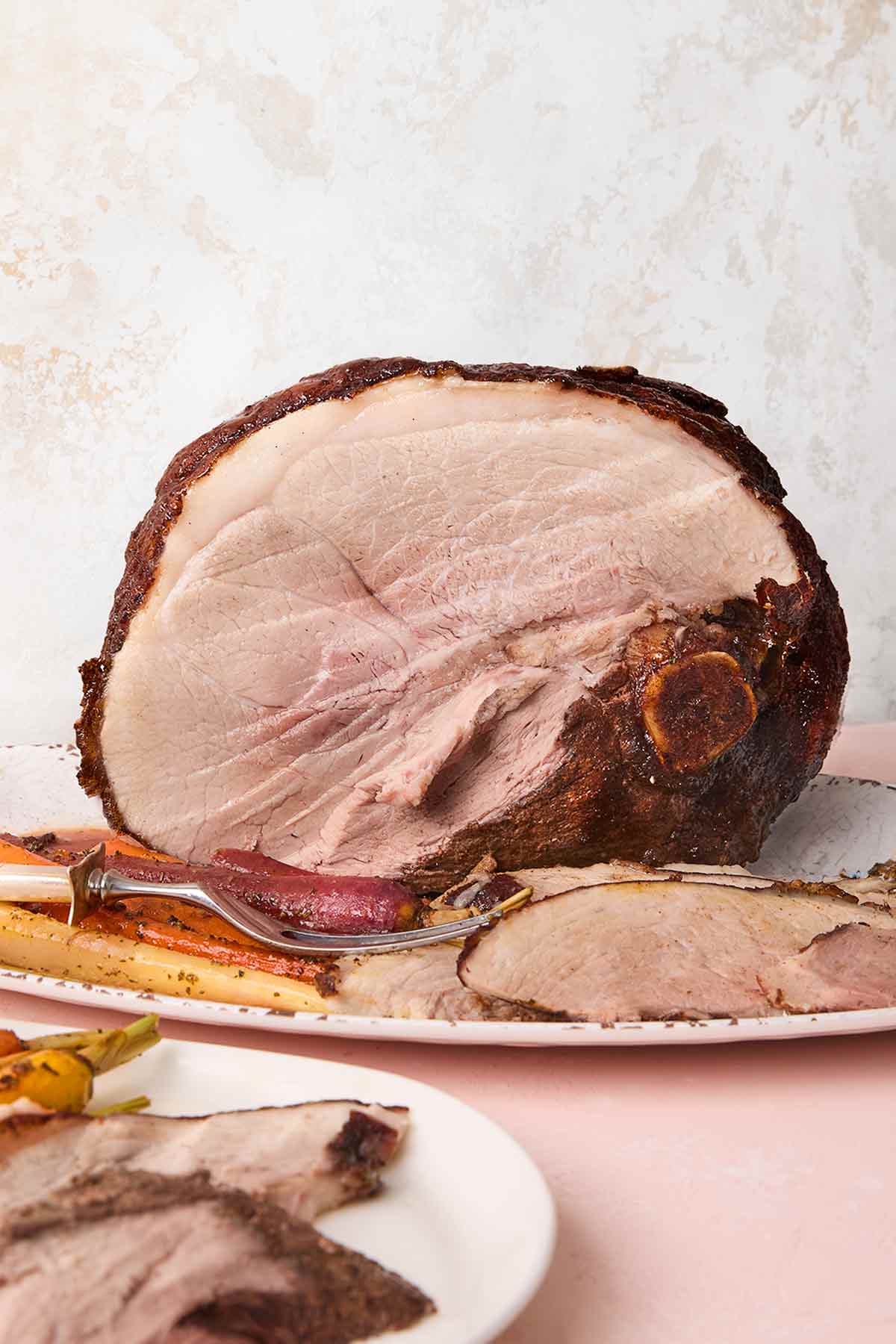
Write a Review
If you make this recipe, or any dish on LC, consider leaving a review, a star rating, and your best photo in the comments below. I love hearing from you.–David
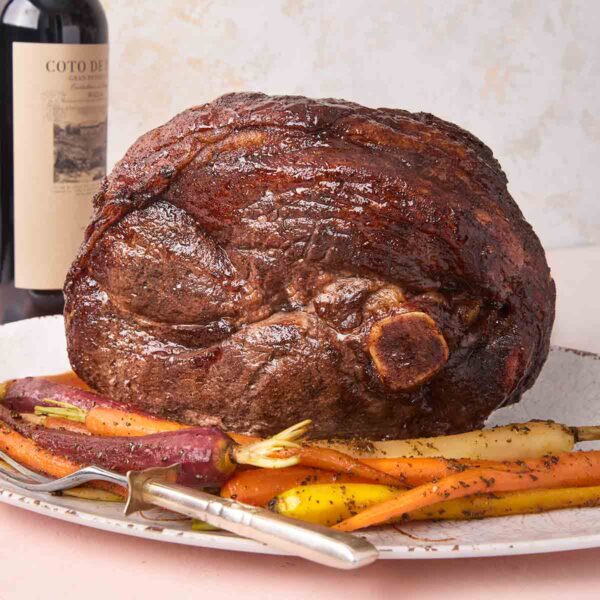
Roasted Fresh Ham with Maple-Spice Glaze
Ingredients
- One (8- to 10-pound) bone-in fresh ham, preferably from the shank end, any rind removed
- 2 teaspoons sugar
- 2 teaspoons ground cinnamon
- 1 teaspoon ground allspice
- 1 teaspoon ground cloves
- 1 teaspoon grated nutmeg
- 1 teaspoon salt
- 1/2 cup maple syrup
Instructions
- Fire the oven up to 325°F (160°C). You want at least 3 inches of space between the top of your ham and the element at the top of your oven.
- Put the Dickensian joint in a large sturdy roasting pan, preferably one that’s shiny enough to reflect lots of ambient heat.
- Mix the sugar, cinnamon, allspice, cloves, nutmeg, and salt in a small bowl.
- Smooth the spice mixture all over the ham’s external surface, working it down into some of the crevices but being careful to avoid any deep-tissue massage.
- Cover the whole kit and caboodle with aluminum foil, slide it in the oven, and leave it alone for 3 1/2 hours while you go do whatever it is you do when a big, sweating hunk of meat is roasting in your oven.
- Peel off the aluminum foil. Baste the ham with about half the maple syrup using a basting brush.
- Continue roasting the ham, uncovered this time, basting every 15 minutes or so with more maple syrup as well as any pan drippings, until an instant-read meat thermometer inserted into the thickest part of the meat without touching bone registers 170°F (77°C), about 1 1/4 hours more.
☞ TESTER TIP: If the ham starts to singe or turn too dark, tent it loosely with foil, uncovering it at the end to get it back to crunchy-crisp.
- Move the ham to a cutting board and let it rest for at least 15 minutes before carving it into slices.
Notes
- Removing the skin–If your fresh ham comes with a rind or any skin attached, you’ll need to remove it with a sharp knife before roasting.
- Pan juices—When the ham is done, there will be marvelously sweet-spicy pan elixir. Don’t toss it. De-fat it, if you wish, and serve it with the ham.
- Storage–Leftover ham can be stored in the fridge in a sealed container for up to 4 days or frozen for up to 2 months.
- Dietary–This recipe is suitable for gluten-free and dairy-free diets.

Explore More with AI
Nutrition
Nutrition information is automatically calculated, so should only be used as an approximation.
Recipe Testers’ Reviews
The roasted fresh ham with maple spice glaze is, in a word, delicious. The flavor of the rub and maple syrup is off-the-charts good.
I purchased a shank-end, 8 1/2-pound ham from my local Publix. It sat on the counter for about 2 hours to come to room temp. This could have been part of my problem with the ham being overcooked, as it wasn’t specified to do so in the recipe.
I then combined the spice rub ingredients using freshly grated nutmeg and kosher salt, coated the ham, covered it tightly in foil, and baked it for 3 1/2 hours. When I uncovered the ham, it had already scorched on the top. I lowered the rack, basted with the maple syrup (grade A) and baked for another 1/2 hour, basting once more with the syrup.
My hubby and I have enjoyed it in our favorite sandwich: ham, turkey, provolone, thinly sliced cucumber, spicy mustard, and mayo on marble rye bread. If the definition of eternity is two people and a ham (credit to Dorothy Parker), there will be a lot of these sandwiches in our future.
I made this slow-roasted fresh ham with maple spiced glaze and couldn’t have been more pleased with the results. I don’t often cook large hunks of protein, but I was on the hook for Christmas Eve and liked the idea of trying a fresh ham roast. For someone who is less familiar with cooking meat, the recipe was excellent and easy to follow. The ham looked beautiful, and I was proud to serve the end result to my family.
I used a 10-pound, bone-in, shank-end fresh ham and removed the rind myself. I didn’t use the full half cup of maple syrup during basting. I served it in thick slices as a holiday meal. I had enough for 20 people to take at least a slice or two and still had some ham left over. I believe that as a stand-alone main, and not with such a big meal surrounding it, it would be closer to 12 servings.
This is a delicious recipe for fresh ham. There’s a perfect combination of spices balanced by the sweetness of the maple syrup. The final internal temperature of 170°F leaves the meat tender and moist.
Be sure to keep any remaining pan juices—they can be poured directly onto the sliced ham or turned into a quick pan sauce using whatever your favorite method is. This is a great main course for a holiday meal or any special occasion.
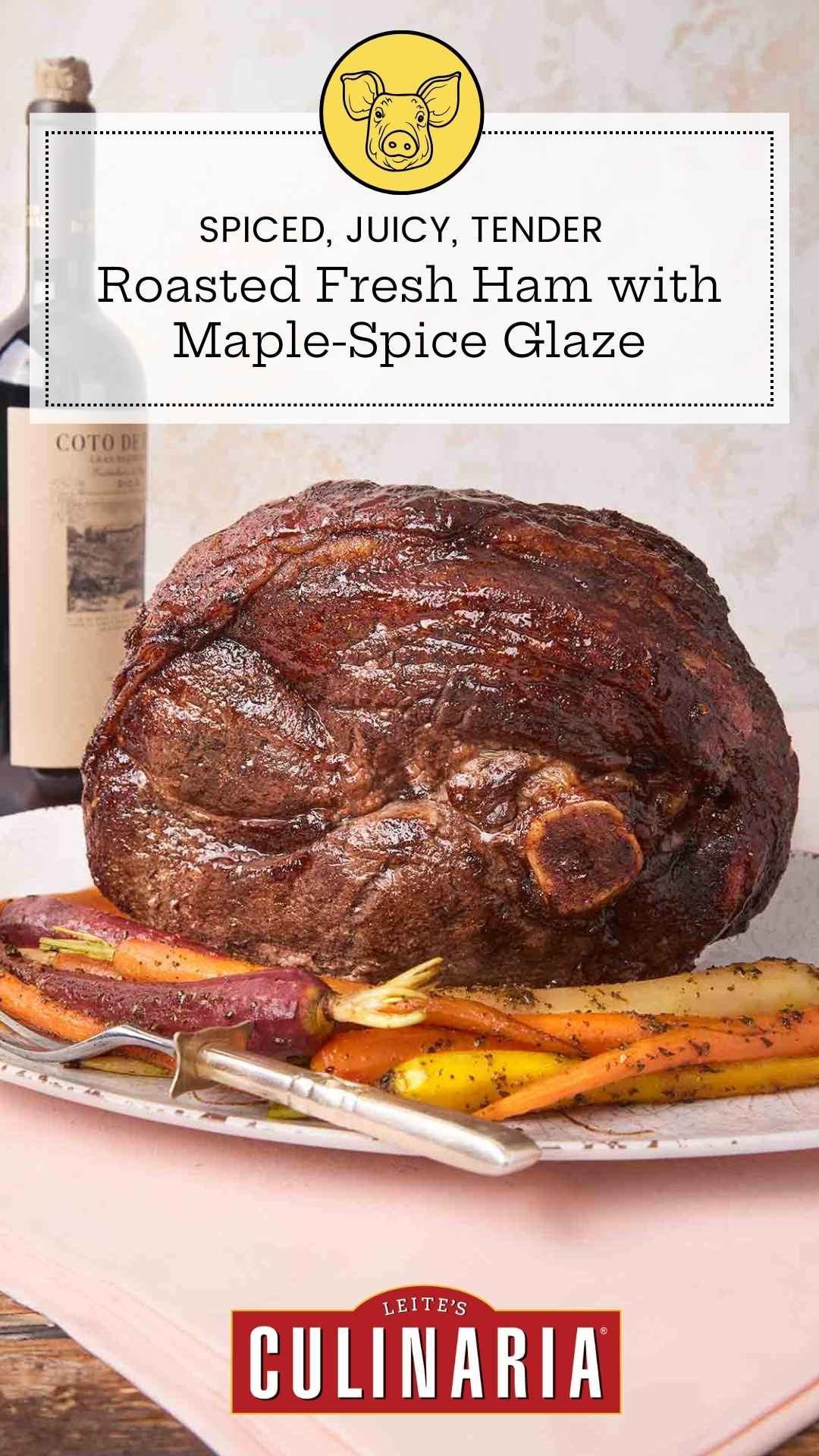
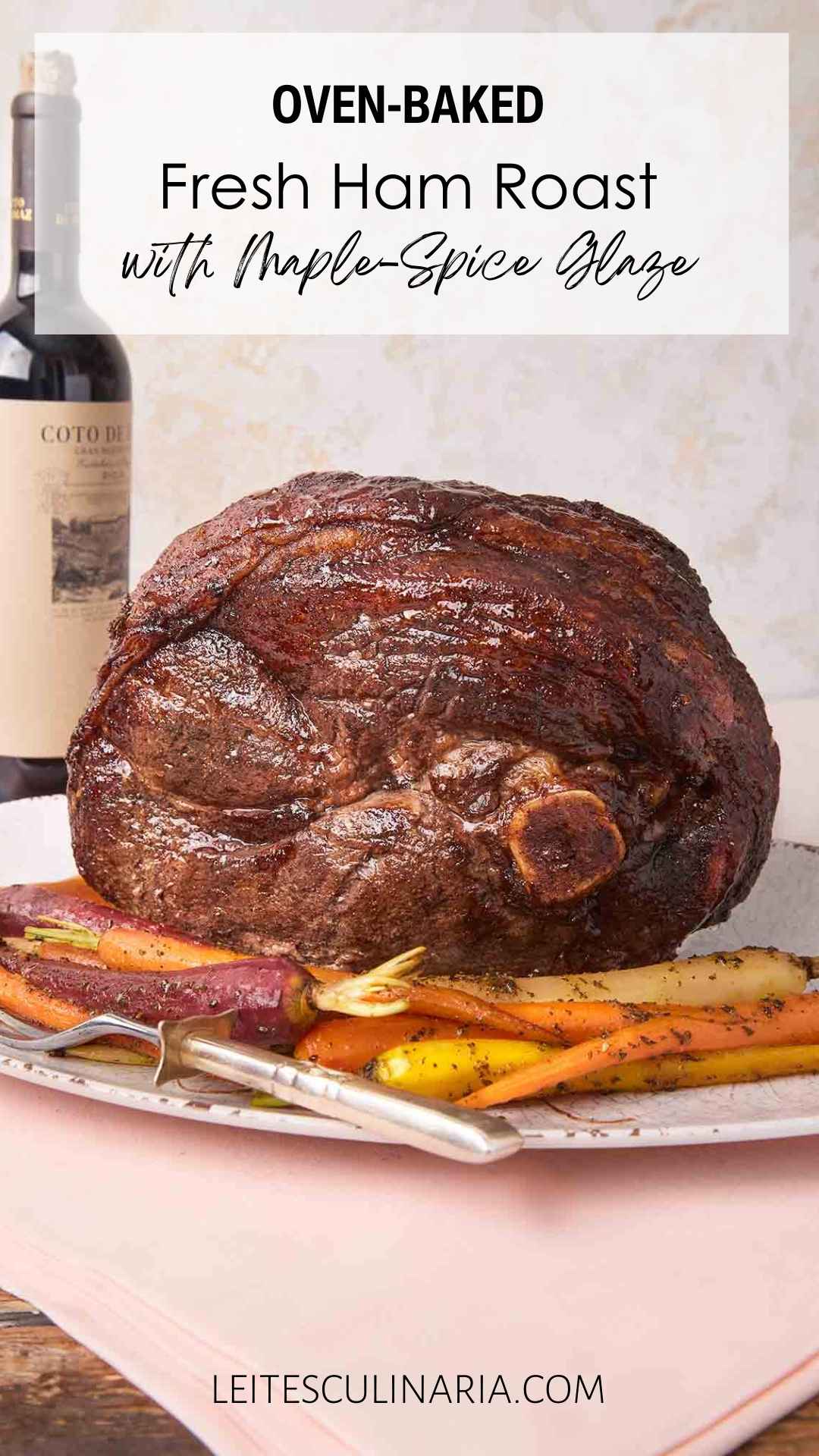
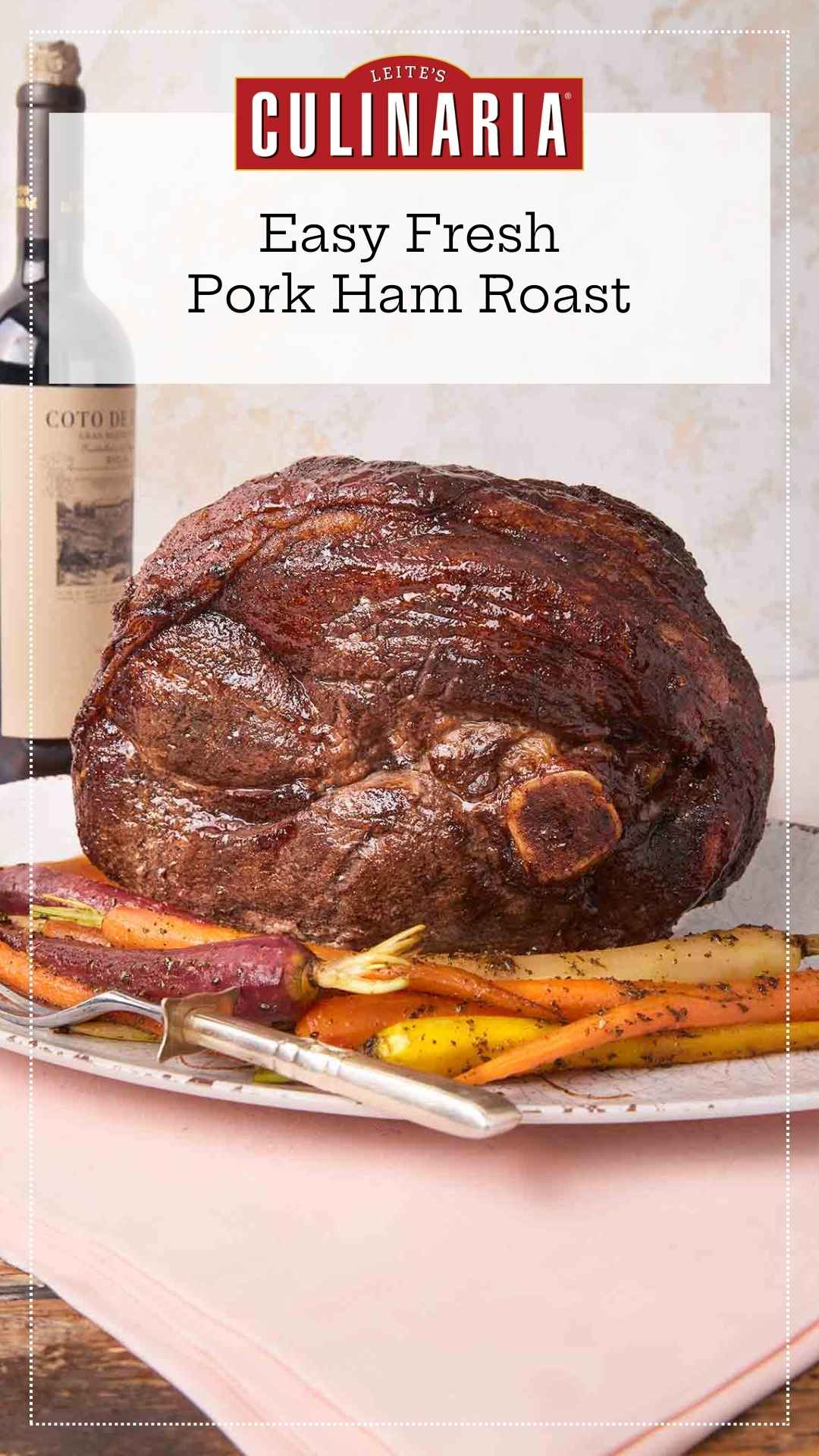
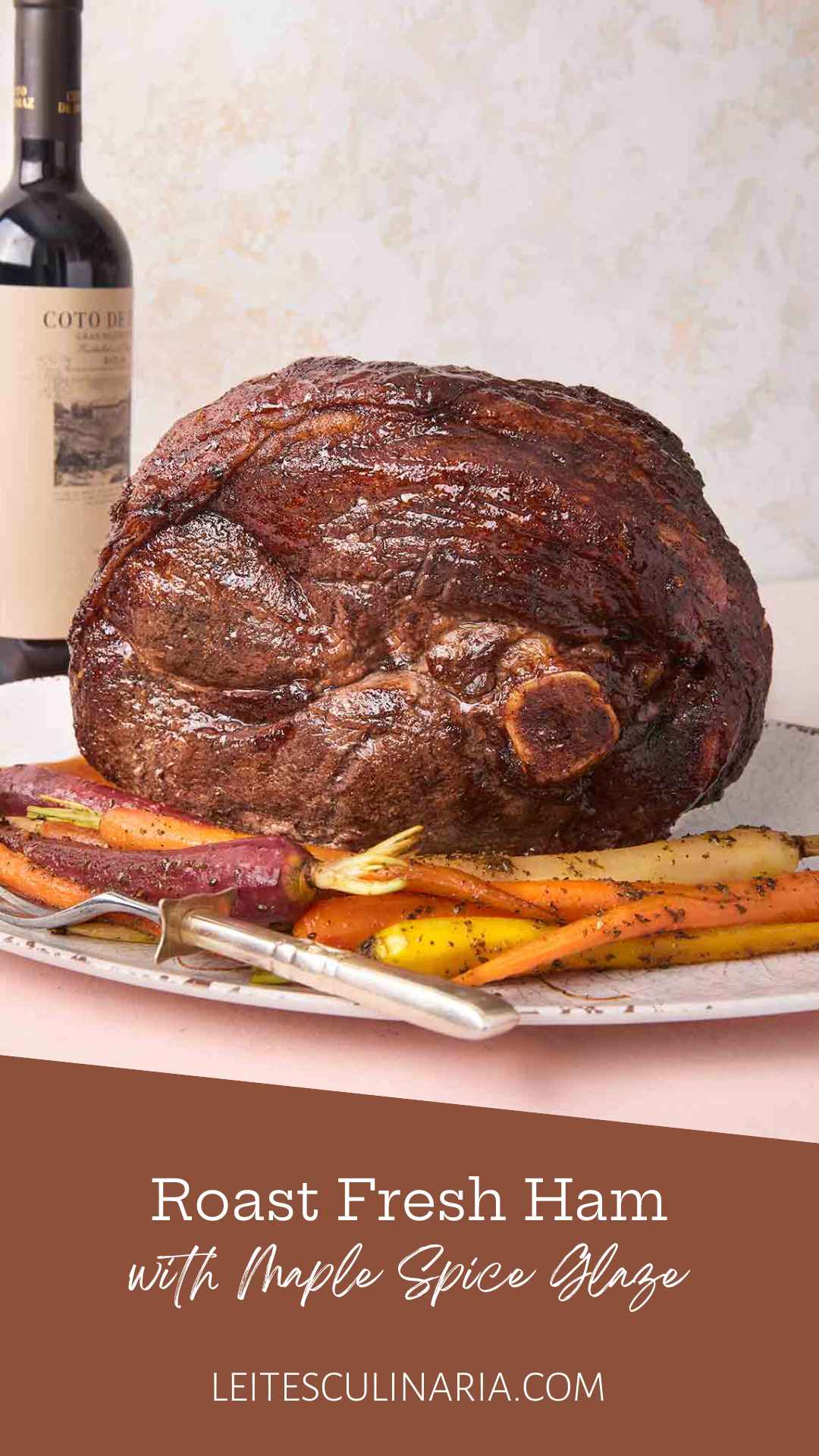

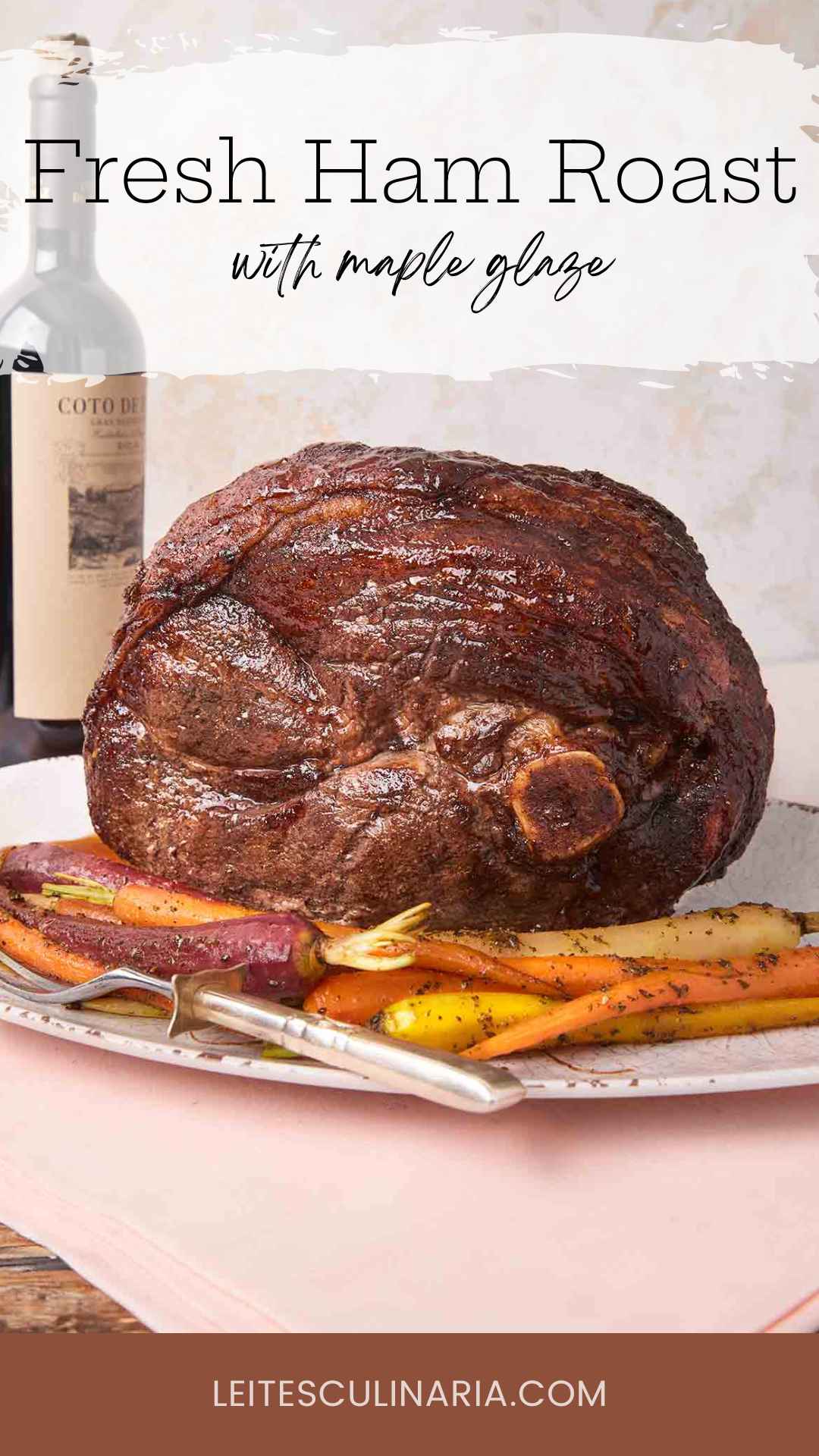
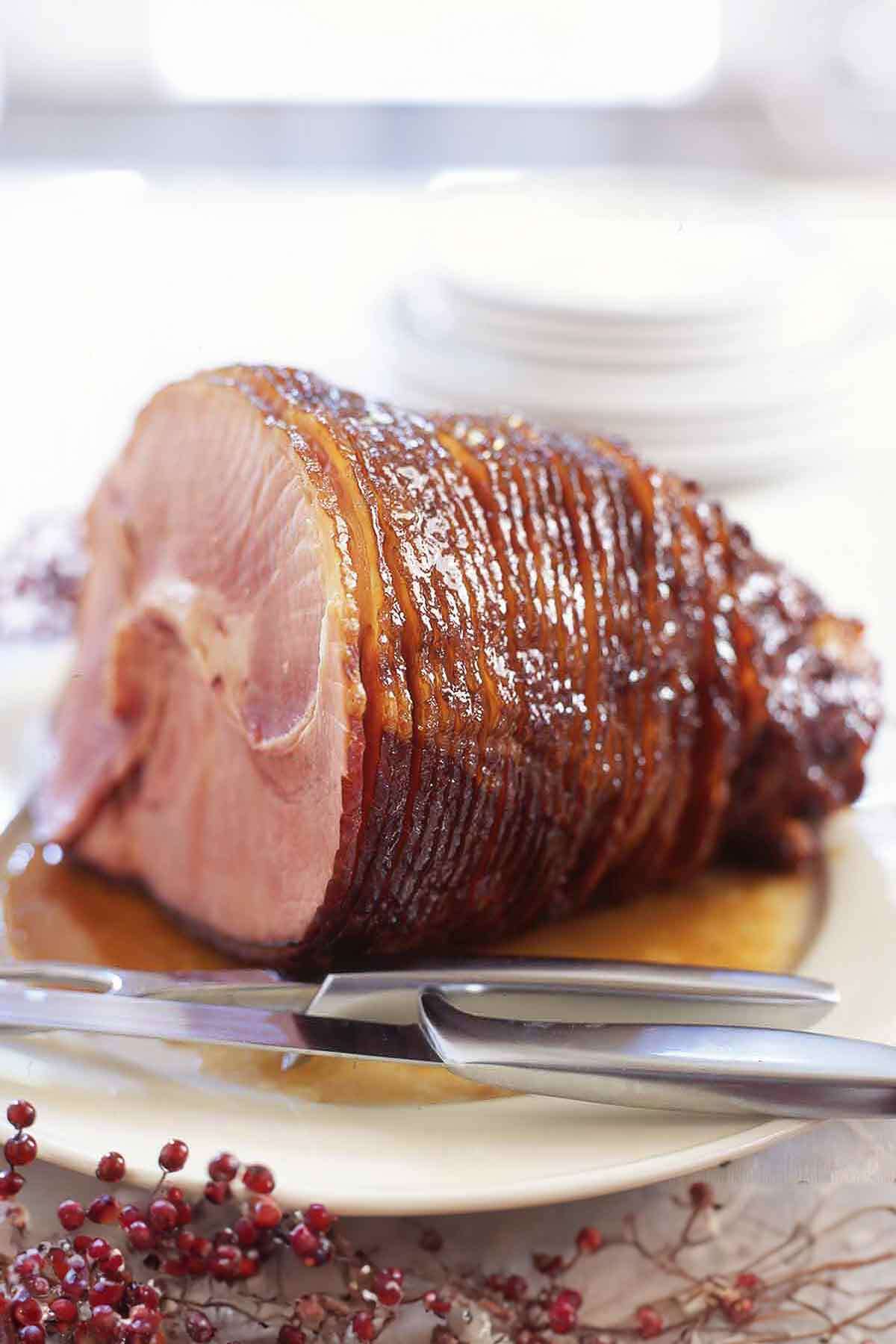
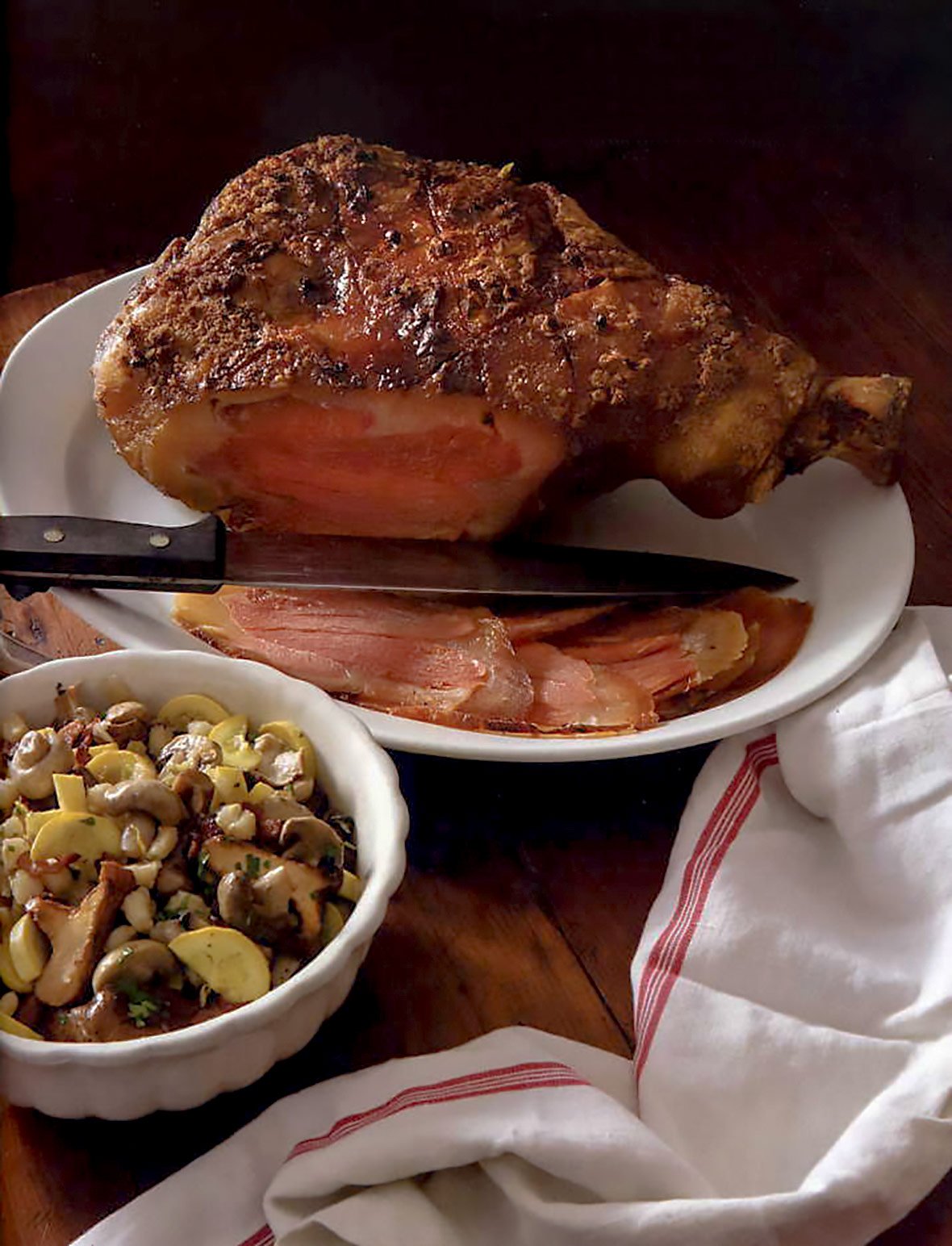
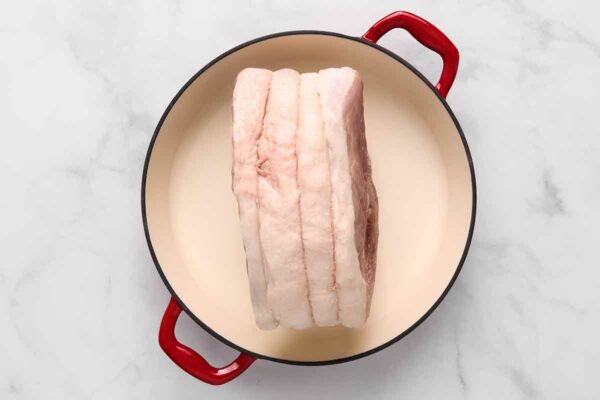
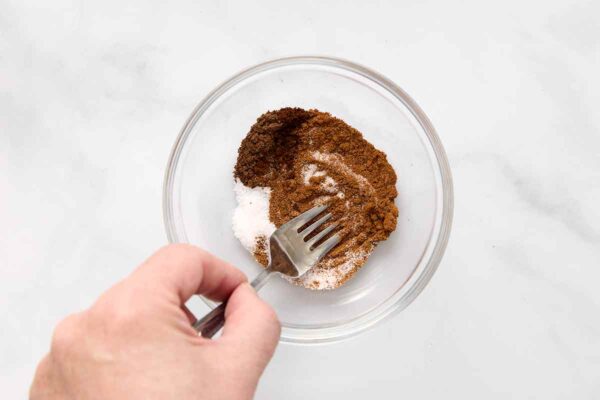
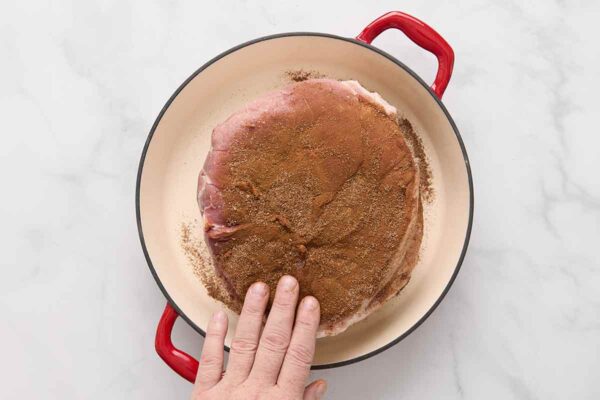













I followed this recipe and the ham came out great! I even separated the fat from the delicious juices for dipping and that came out wonderful as well! Great recipe with a beautiful ham to share with family! Thank you!
Bree, This makes me so happy to read. Separating the fat from the juices for dipping is such a slick move — you basically created a wee, flavorful jus situation on the side, and I love the way you think. I’m thrilled the ham came out beautiful and worthy of a family spread. If you make it again, I’d love to know what you like to serve alongside it!
Love the sound of this recipe! My pork farmer doesn’t have the ham roast cut but has a shoulder roast and a pork tenderloin roast.
Would either of these work, or is it not recommended? Thanks for another amazing recipe!
Hi, Donna. This is a lovely recipe and so easy to make–just rub and roast. The pork shoulder might work, but ham (from the hind leg) has more meat and larger sections of muscle. Tenderloin can be used, but it will cook comparably very, very squickly. This kind of preparation is meant for large joints of meat.